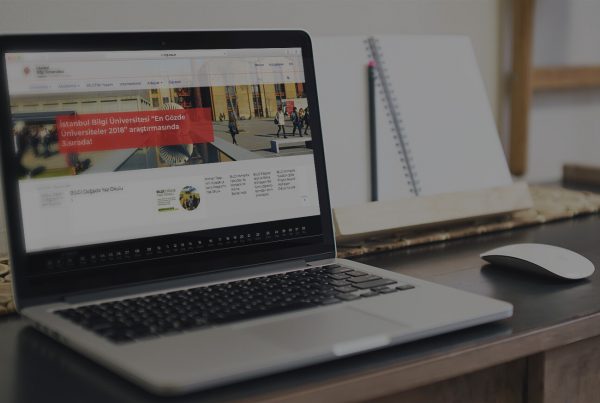Your website might look super great, but does it really work well for people who visit it? Here you’ll face 10 bad user experience elements that may hurt your online business or cause misunderstanding between you and customers.
Let’s pay attention to factors that complicate web users’ lives but in fact shouldn’t. In most cases we produce them ourselves and then wonder why potential clients don’t want to deal with us.
Unfortunately while building a site we may lose many small aspects that consequently do matter. What text color to choose? How many fields of a contact form to use? How to name our on-site consultants? These and many more questions do not seem to be important at the very beginning of a website creation process. However, the more we work with it the more variations appear.
Because of that we want to warn you from doing some crucial mistakes. As a beginner web designer you can’t know them all but after reading this article you’ll be able to recognize and avoid using bad user experience elements.
1. Slow Pages Response
When people get into a site with a frustratingly long loading procedure they are more eager to abandon it than wait for a few seconds more. In most cases we used to get quick services of all kinds. It applies to meal, coaching programs, business consultations and of course to the web. We used to be in a hurry and the need to wait for something we don’t really know seems to be a loss of time.
There is an excerpt from KISSmetrics infographic that shows how web pages abandonment depends on the load time in seconds.
There are many ways to test your website’s performance. Here we’ve found some page speed checkers, so that you can find out more about your own website:
2. Massed Web Pages
Take a look at the image above and you’ll understand what we are talking about in this paragraph. Apple-pushing minimalism is a king of web design that somebody likes and others are indifferent too. However, you’ve probably seen many web pages where hundreds of imaginable and strange elements dock to each other. It’s always hard to deal with such web pages because, frankly speaking, it’s questionable to understand their logic and aims.
Click the screenshot of the website below. We find difficulties in supposing why it was created but we’re definitely sure you have to see it yourself.
3. Sophisticated Navigation
Both on and off line competition are extremely strong in most business industries. Site owners try to be original to grab more of users attention and that’s where they make mistakes. Being eccentric in real life means being modern and bold. However, on the web it rarely works the same.
Web surfers want to satisfy their needs and move on. In this case embellishments, visual effects and complications will work against you. Vivid animation diverts viewers from the main aim of the entrance and meshed navigation confuses them a lot. When being forced to use inconvenient menus viewers may lose the motivation for further activity on a site. It may seem to be too boring, or too complex or time-losing or whatever else.
Try to balance your target audience interests with your site content. Breadcrumbs are appreciated on sites with deep details elaboration and categorization; horizontal or vertical navigation bars match simple business websites; tab navigation fits both business and artistic designs and dropdown panels require some free space on pages. Choose the variation to help visitors get around the website with ease.
As a practical exercise try to compare the following designs.
The business website template features simple horizontal toolbar with a dropdown section.
The photographer’s portfolio website template uses the less official menu type of tabs illustrated with icons.
These themes are created for different categories of people, so it makes sense to apply various navigation for them.
4. Unexpected Music
Background music and sound effects are always out of season when web users don’t know about them in advance. And even when being informed about the accompaniment people may refuse entering the site.
Such unexpected surprises irritate and even scare. Probably there is only one category of web surfers who will appreciate it: children from 3 to 12. If you’re going to create a website for kids you can read our post about the challenges waiting for you on that way. In case your future project is aimed at the older audience you’d better think twice before adding automatic music tracks to your web pages.
The chances are low but it may happen that you’ve never been confused with such unbelievable sites. Allow us to broaden your views a little bit and to show a design that stays in memory for years. Click the screenshot below. We are sure you will never forget this experience, especially if your speaker is on.
Have some contrary arguments? Let’s discuss everything in the comments field below the article.
5. The Bad and the Ugly Color Combinations
There are tones of colors all around and we’re free to mix them anyway. Sometimes this tempting freedom plays tricks on site owners. Wrong color combinations can do a real harm for the very best layouts. Those who know color theory rules, in most cases they are professional designers, are safe from doing these mistakes. However, when a beginner starts experimenting with tones and hues it results in failures.
Lame color schemes cause bad texts readability, wrong perception of color psychology, ineffective call-to-actions and the frustrating look of the entire website.
So what color combinations are considered to be bad?
- Green background with green, white or yellow design elements;
- Light web pages background blended with light objects;
- Too many vivid tones;
- Black website background with multicolored text
- etc.
6. Focusing on Yourself
There is a simple but great phrase that we should remember when dealing with customers: people don’t care about you, they just care about themselves.
Why do you obviously enter these or that websites? Probably because you think they can offer you some good issues… not because they are so cool. Even popular Facebook and Amazon are popular just because you can buy a thing or find old friends there. It’s your personal benefit that makes these sites valuable.
Thus when entering a site focused on its own people feel bored very quickly. They don’t really need to read your “story of success” while they don’t want to make business with you. Display effective slogans, product lists or a discount board to draw visitors attention beforehand.
7. A Lack of Contact Details
The main aim of all websites is to get users interested in what they are offering. It is true but it happens that site owners forget to go further and to provide actual contact information. Thus even the most interested and engaged clients don’t know how to make a deal. This is a topical problem of personal portfolios of artists.
Years of practice prove that quite often people want to communicate with a dealer, a seller or a service provider before making a purchase. It can be a trust test or a need to solve pre-sale issues. Because of this you need to provide several ways to contact you. That can be a contact form in footer or on a separate contacts page, links to social media accounts, a phone number or a physical address. Choose what you think will work best for your auditory.
Here we selected several designs to give you a hint on how to arrange contacts on your own site.
8. CAPTCHA Identification
How many sites do you think really need CAPTCHA? It’s hard to be right in this question because nobody likes it. Back in 2000 when this user identification procedure was coined it worked well, but now there are several software solutions to crack CAPTCHAs pretty easily. Common users won’t use this technology and professional spammers will go round the difficulty. That’s why CAPTCHA is useless.
In most cases CAPTCHAs are badly readable and need several attempts to be decrypted the right way. It irritates greatly. Site visitors will gladly go away from a site ‘over-protected’ with incomprehensible letters. Don’t let them do that.
9. Social Media Sharing Icons
It’s a tricky question to use or not to use social media sharing icons on web pages. The first extreme becomes apparent when website owners display every possible social media button while trying to create a sharable content. Remember yourself deciding to share a blog post and being lost in a variety of sharing buttons. Right after that the article stops looking so interesting and you close its browser tab.
Imagine another situation when there are no sharing buttons at all. Nearly a year ago SmashingMagazine Blog, that is definitely one of the most authoritative and popular web design resources, removed sharing buttons from their blog post pages. We don’t know what ruled them to do so but it seems to be inconvenient for readers.
There are no strong rules on how many social media sharing buttons should be used within a website. However, everybody agrees that they have to be there. Both the lack and the surplus will distort users experience and people may go away without doing a thing.
10. Broken URLs and Missing Pages
There are tons of creative 404 pages to be inspired with. Modern site owners are able to choose from super engaging designs but they still prefer to use default stoppers. Of course it’s a bad thing if you have broken links on your site but it’s even worse when these bugs result in customers loss.
You can’t predict all the possible issues why the site may go down but you’re able to provide visitors with basic information about the problem and the ways to look for more on other pages.
That’s how MotoCMS 404 Page looks. In case it appears on a screen viewers may choose which pages to browse next. We don’t want them to feel lost and confused and thus we offer different quick ways to solve the problem. We recommend you to do the same.
All these elements are quite simple and quick in use. You can spare just a few moments to re-arrange them and to gain better results in clients engagement. Right now you may be a step away from becoming a good seller or service provider. All you need is some patience and maybe a few tips to follow. Use this article as a guide to improve user experience on your website.
Source: http://www.motocms.com/blog/web-design/10-bad-user-experience-elements-stop-tolerating/



